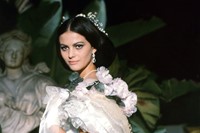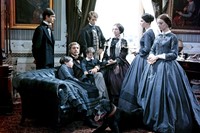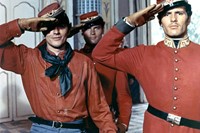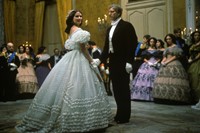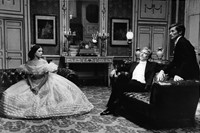Piero Tosi, who died earlier this month, worked on The Leopard, Death in Venice and Medea – and is an enduring influence on fashion and cinema alike
When news came earlier this month of the passing of Italian costume designer Piero Tosi, aged 92, it seemed possible we would not see his kind again. In spite of digital technology and the wide net of resources available to cinema’s contemporary designers, it’s hard to imagine the level of analogue precision with which Tosi undertook his life’s work.
His first film credit was Luchino Visconti’s Bellissima (1951), starring Anna Magnani, and he would go on to work with Visconti on nine more films, including The Leopard (1963) and Death in Venice (1971). In interviews, Tosi would later mention the latter as his most stylish film. An appraisal of young Tadzio’s juvenile sailor suits and Silvana Mangano’s grandiose Belle Epoque silhouettes would tend to confirm his opinion.
Among his other contributions would be to Pier Paolo Pasolini’s Medea (1969) and works by Federico Fellini and Franco Zeffirelli, but his most memorable remained the historical costuming he did for Visconti, who shared his obsessively meticulous approach to historical accuracy. From 1860s Germany to early 20th-century Venice, no era captured on-screen went undissected.
In a piece for Vogue, Hamish Bowles noted that Visconti insisted on accuracy even in items that would never appear on film, including a lace handkerchief in a purse or a set of period-correct underwear in a closed drawer. This feverish zeal for accuracy might seem a little pedantic, but these costumes – along with the equally exacting set design – helped to create a space in which actors could truly belong to a historical era, and for Visconti, who framed his tableau shots like a master painter, they were an intrinsic part of character.
In the famed ballroom scene of The Leopard, Claudia Cardinale was dressed in fresh white organza by Dior, which was underlaid by a dozen layers of tulle and a period-correct, rib-bruising corset; but all the many decorative extras were costumed lavishly, too, with no expense spared on detail. Poring over antique fabrics, vintage buttons, and with little regard for comfort, Tosi and Visconti worked to make their actors move and posture themselves as though from a bygone age. The stiff fabrics assured that. And if those fabrics couldn’t be found – which they often could not – Tosi would oversee a team of artisans who recreated these obsolete materials from scratch. As The New York Times wrote in 2006, this perfectionism could border on the pathological. For The Leopard, “the red shirts worn by Garibaldi’s soldiers in the battle for Palermo were famously soaked in tea, left in the sun, buried, redipped, resunned and reburied for extra worn-in verisimilitude.” Few filmmakers or designers could recreate a gilded epoch on the edge of decay with such vivid clarity.
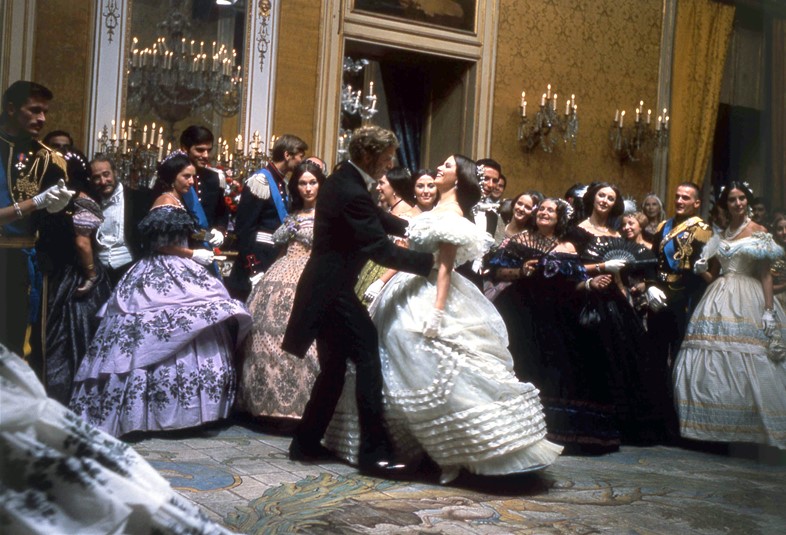
Beyond Garibaldi’s rebel army, Tosi outfitted the jaunty hat and exquisitely-fitted monochrome gown on Romy Schneider in Ludwig (1972); the prissy three-piece white suit on Dirk Bogarde in the final scenes of Death in Venice (1971); the uniform buttons on Austro-Hungarian soldiers in Senso (1954); and the downright vogue started by The Damned (1969) for 1930s glamour, as personified by Charlotte Rampling in a slinky cream lace dress.
Tosi’s legacy has been cemented over the decades by his long-term involvement with Umberto Tirelli’s respected Roman costume workshop. Contemporary progeny, working under Tirelli’s banner and from Tosi’s influence, have gone on to design period-correct costumes for Barry Lyndon (1975), The Age of Innocence (1993) and Marie Antoinette (2006).
In spite of his attention to period costuming, Tosi’s work has been quoted both periodically and liberally by fashion designers. Dolce & Gabbana are particularly fascinated by Tosi’s work: from a full collection in 2012 inspired by Cardinale to this year’s Alta Moda show in the Sicilian filming location for The Leopard, his influence is not going away. Manolo Blahnik and Valentino have mentioned Tosi as a reference and an influence. Perhaps it was Roberto Cavalli who captured the spirit of Tosi’s work best when talking about the themes of The Leopard. “The more it changes, the more it stays the same... [is] a good metaphor for fashion,” he explained. Anachronistic though it may seem, the opulence and detail of Tosi’s work with Visconti is an enduring influence on fashion and cinema alike.

